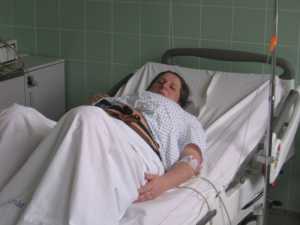MedicalResearch.com Interview with:
Neda Ratanawongsa, MD, MPH
Associate Chief Health Informatics Officer for Ambulatory Services, San Francisco Health Network
Associate Professor, Division of General Internal Medicine
UCSF Center for Vulnerable Populations
Physician, Richard H. Fine People's Clinic (RHPC)
Zuckerberg San Francisco General Hospital
San Francisco, CA 94110
MedicalResearch.com: What is the background for this study? What are the main findings?
Response: U.S. federal incentives allowed many safety net healthcare systems to afford fully functional electronic health record systems (EHRs). Although EHRs can help clinicians provide care to vulnerable populations, clinicians may struggle with managing the EHR workload, particularly in resource-limited settings. In addition, clinicians’ use of EHRs during clinic visits may affect how they communicate with patients.
There are two forms of EHR use during clinic visits. Clinicians can
multitask, for example, by ordering laboratory tests while chatting with a patient about baseball. However, like distracted driving, using EHRs while talking with increases risks – in this case, the risk of errors in patient-provider communication or in the EHR task. Alternatively, clinicians can
use EHRs in complete silence, which may be appropriate for high-risk tasks like prescribing insulin. However, silence during visits has been associated with lower patient satisfaction and less patient-centered communication.
So we studied how primary and specialty care clinicians used EHRs during visits with English- and Spanish-speaking patients in a safety net system with an EHR certified for Centers for Medicare & Medicaid Services meaningful use incentive programs. We found that multitasking EHR use was more common than silent EHR use (median of 30.5% vs. 4.6% of visit time). Focused patient-clinician talk comprised one-third of visit time.
We also examined the transitions into and out of silent EHR use. Sometimes clinicians explicitly stated a need to focus on the
EHR, but at times, clinicians drifted into silence without warning. Patients played a role in breaking silent EHR use, either by introducing small talk or by bringing up their health concerns.
(more…)










